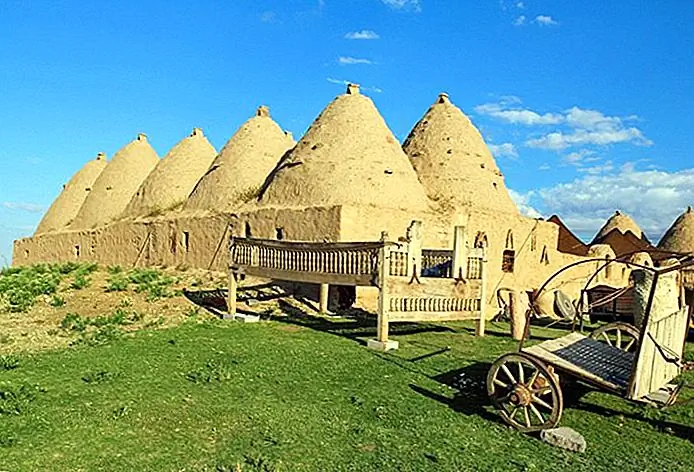About 50 kilometers south of Şanlıurfa, Harran offers visitors a taste of a different culture, and the settlement’s long history offers some fascinating historical sights and connections to the present. Although most tourists come here to enjoy the ancient atmosphere, modern Harran, near the border with Syria, is also home to a distinctly Syrian Arab influence. Locals here speak both Arabic and Turkish, and their traditional mud-brick beehive style of housing can also be found across the border in northeastern Syria.
History
Harran is best known for its links to the story of the prophet Abraham and receives a mention in the Old Testament (Genesis 11:31 and 12) as the place where Abraham and his tribe stayed for several years during his journey from Ur to Canaan.
Harran must have existed as a settlement from the 18th century BC. Excavations have confirmed that the site was settled in the 3rd millennium BC and clay tablets from the 18th century BC. Mention the city and other neighboring settlements, which often bear the names of Abraham’s relatives.
Read also: top tourist attractions in Palermo
In the following years, Harran became a center for sun and moon worshipers. The remains of a double temple for Sin (moon) and Shamash (sun) found here date from the 16th century BC. Domination by various nations (such as the 13th-century Assyrian Empire) did little to change Harran’s status as a center for heaven worship and when the Babylonians arrived (556–539 BC), they also encouraged the Sin cult. Even the successors of Alexander the Great and the Romans worshiped the moon god.
The city was known at the time as Karrai and later Carrhae and was the site of much fighting between competing empires. In 53 B.C. The Parthian Orodes II destroyed the army of Crassus here. In Harran in 217 AD. Caracalla was murdered on the way from the temple to the ruler’s palace. It was 382 AD. Before all pagan shrines were destroyed by the Byzantine Emperor Theodosius the Great and which included the Temple of Sin at Harran. Interestingly, despite the flow of different rulers, some hinterland towns escaped the religious conversions that swept through Harran. In nearby Soǧmatar, the Sabian sect continued to worship astral bodies in their shrines and temples into the early Middle Ages.
The Umayyad Caliph Marwan II lived in Harran from 744 to 750, and is said to have established the Ulu Camii and the oldest Islamic university here. A Mongol invasion in 1260 destroyed the city and did not recover until the Ottomans took power in 1516.
The website
The old town of ancient Harran, where Abraham is said to have lived, is the main point for sightseeing. It’s called now Altinbasakand the settlement mound here has evidence of occupation from the 3rd millennium BC onwards.

The badly run down city walls, the course of which can still be easily traced, encompassed most of the old town. The wrinkled and undulating terrain here is typical of an abandoned city; a similar landscape is evident in the abandoned old town of van in eastern Turkey. The ring of walls is broken by seven gates of which five can still be identified: the Aleppo Gate to the west, which, according to an inscription, was restored by Saladin in 1192; the Lion’s Gate in the north; the Mosul Gate in the West; the Raqqa Gate in the south; and the Roman gate (Bab ar-Rum).
The southeast of the site is overlooked by the impressive remains of the citadel. Once a three-story structure, it was restored by the Fatimids in 1032. Three polygonal fortified towers can still be identified and are believed to take the place of the moon temple for which Harran was once so famous. Others have suggested that this shrine was located near or even beneath Ulu Camii site just to the northeast. This large square site contains the remains of a mosque (and the world’s first Islamic university) built by the Umayyad rulers. It was expanded in AD 830 and restored in Saladin’s time between 1174 and 1184.
Location: Harran is located 50 km south of Şanlıurfa.
Read also:
Enchanting escapades! 5 Places In India Where ‘Love Is In The Air’





